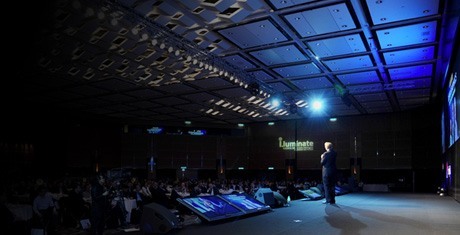
We are no longer in a period of rapid change. We have now entered an amazing inflection point where true transformation happens. For example, we changed how we listened to music and catalogued our media when we went from CDs and floppy discs to all our smartphones holding music, photos, files, email and access to information. Technological change transformed our processes in these industries.
Going forward, the one and only thing you can depend on is transformation. Technology-driven business process transformation is a hard trend; it will happen, and it is happening now! However, the truth of the matter is that actually utilizing this hard trend to redefine and reinvent your business or your career is a soft trend; some will do it and prosper, others will not. For those who want to use the forces of change and transformation to grow and prosper, this article is for you. It is crucial to understand that you can’t go backward, and you can’t stand still. You can’t keep doing what you’ve always done and expect to thrive, even if you are improving at that rhetorical process. The only way to survive and thrive is to continuously reinvent and redefine everything you are doing.
Transformation is an accelerated and magnified force of change. Redefining and reinventing is a way of harnessing that wild force and applying it to a product, a service, an industry, or a career. Redefining and reinventing mean seizing the opportunity to rewrite your own history—before digital disruption does it for you.
Lee Iacocca and Hal Sperlich reinvented an entire marketplace back in 1983 when they redefined the family station wagon with an entirely new automotive category—the minivan—that would continue to dominate for the next quarter century. At the time, station wagon sales were not growing, even though baby boomers were in their prime childbearing years and the nation was bursting with new families. Why? Because even though baby boomers needed a set of wheels with substantial family room, they did not want to look and act just like their parents.
Fast forward to more recent times. Basic minivans are not as cool to the next generations having families, as Generation X and millennials grew up riding in their parents’ minivans, and history tends to repeat itself: they do not want to look and act just like theirparents, either! Now automotive companies produce what is called the crossover—sporty alternatives to minivans capable of safely and conveniently hauling both families and large purchases from the store. As it was a stroke of flash foresight with baby boomers, it occurred yet again, based on the hard trend of Generation X, millennials, and their needs (along with the eternal insight that people don’t want to look or act like their parents).
Reinventing has always been a powerful strategy. But in the past, corporate and product reinvention was an option; today it is an imperative. Today, we live in a unique context, where an absurd amount of processing power and bandwidth exists and has completely transformed our concept of stability. In the past, stability and change were two contrasting states: when you achieved stability, you did so despite change. Today change itself has become an integral part of stability. You can achieve stability only by embracing change as a continuous and permanent state.
But even change itselfhas changed. Information and new knowledge now travel around the world at the speed of light while technological innovation occurs almost as fast as the speed of thought. In this new frontier of vertical change, you cannot just reinvent now and then: to survive and thrive you must be redefining and reinventing yourself, your business, and your career continuously.
If you are a business, you are faced with an urgent question every day: Are your customers learning and changing faster than you are? Because they are changing and learning fast—and if you are not already designing and providing the solutions to the problem they are going to have next week and next year, you are already behind the curve. This truth spans industries and size, no matter if you are an individual, a small business, or a multinational corporation.
The question is whether we will become more anticipatory by paying close attention to the Hard Trends shaping our industries, or wait until we are inevitably disrupted by technology-driven change. Apple, Google, and Amazon are good examples of Anticipatory Organizations, and the results speak for themselves. Will you join them?










